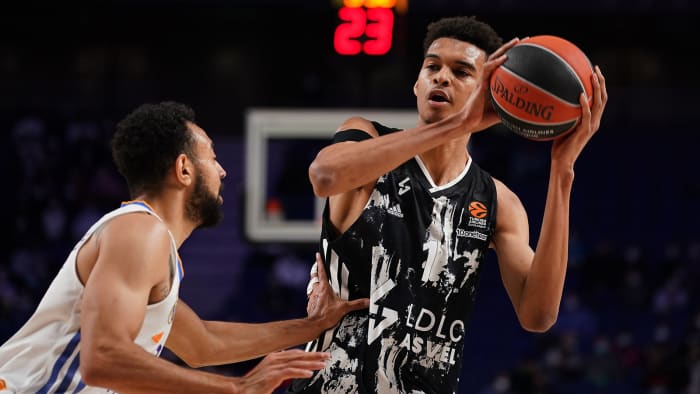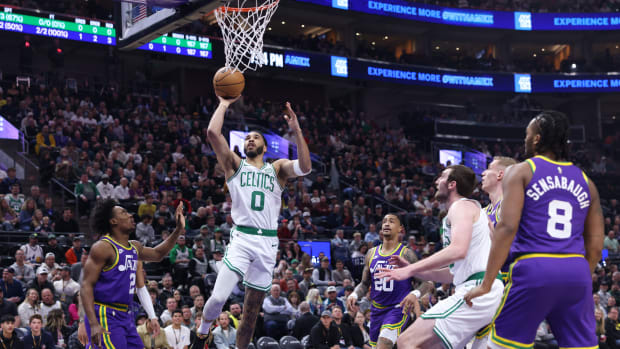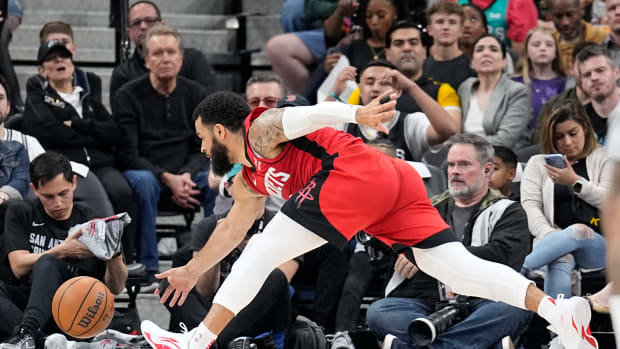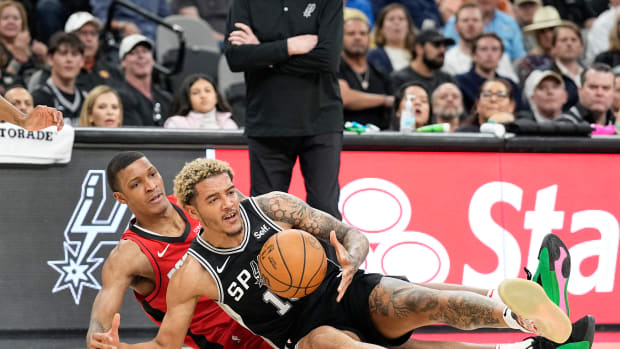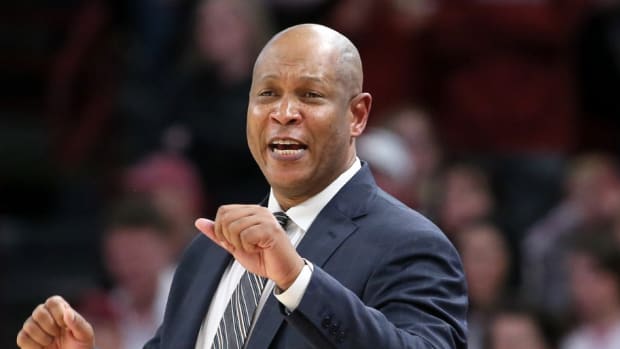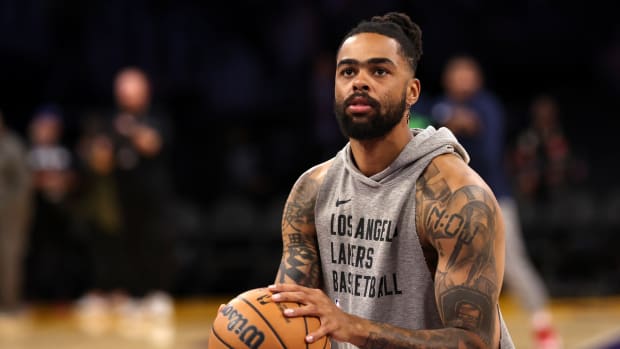Victor Wembanyama Is Why the NBA Is Already Eyeing the 2023 Draft
As a rule of thumb (and in the interest of sanity) I usually avoid thinking too critically about the following year’s draft until the current one is over. This year, the circumstances are a bit different and a tad more pertinent to the present. At the combine earlier this month, the 2023 draft came up enough in conversation to validate the theory that a reasonable chunk of NBA teams are looking ahead with a bit more intent than usual.
(Cue Victor Wembanyama’s theme music.)
The pending arrival of 7-foot-3 French teenager Wembanyama—who is more than a year away from being drafted, but has gathered as much steam in the NBA community as any prospect since LeBron James—almost guarantees that the draft discourse for 2023 will differ starkly from what we’re currently wrestling with. Right now, there’s variance of opinion, but the discussion surrounds three or four top prospects with reasonable cases at No. 1 (I feel strongly about Jabari Smith being the guy, but can understand other arguments). Barring injury or any unexpected plot twists, Wembanyama will begin his draft cycle billed as a true consensus No. 1 prospect, and will presumably hold that spot until draft night.
Gifted with incredible size, length, mobility, and skill, Wembanyama has already attained the type of lofty prospect status we haven’t seen in quite some time. It’s hard to make direct comparisons with Wembanyama’s game because there’s never been a prospect quite like him, but he has the defensive chops to be a Rudy Gobert-like rim protector, and there are moments on offense where he moves like Kevin Durant. He’s huge and nimble, he can handle and shoot, and his frame is still maturing. At 7' 3" and 240 pounds with a 7' 9" wingspan, he’s averaged 16 points, 8.9 rebounds, 3.6 blocks and 1.2 steals per-36 minutes this year as an 18-year-old in France. And he’s played a real role for French club ASVEL, which also plays in the Euroleague, and is owned by Spurs legend Tony Parker. I have not seen Wembanyama play in person yet, but it’s not particularly hard to watch some clips and know you’re looking at something unusual.
Were he eligible, Wembanyama would be the No. 1 pick in the 2022 draft, and it’s not a stretch to posit that he would likely have rated as the top prospect in any draft in the past decade, dating back to the Anthony Davis draft in 2012. While most front offices know they likely won’t be bad enough to select Wembanyama, everyone knows he’s on the horizon. In conversations with NBA personnel at the combine earlier this month, the optics of the upcoming Wembanyama draft became a fascinating topic. Players his size tend to come with injury risk, but it’s hard for league execs to otherwise envision scenarios in which he doesn’t go No. 1. For teams presently mired in the rebuilding process, this information begs the question: does it makes sense to try and orchestrate a step forward next season at all, when remaining near the bottom of the standings ensures a legitimate chance at selecting Wembanyama?
There are so many variables over the course of a year, and tanking is a demonstrably imperfect strategy. Finishing with the best odds ensures nothing. Committing to that process requires lottery luck and patient ownership, and most organizations can rely on neither. Oklahoma City’s current project seems the obvious exception to the rule, and rival teams already expect the Thunder will remain pot-committed to not being very good, at least for one more season, to ensure entry in the Wembanyama sweepstakes. Teams like Orlando, Houston and Indiana may again wind up near the bottom of the standings without having to go out of their way. Detroit and Portland are among the non-playoff teams hoping to make real improvements next season, but for any team stuck in the middle of the pack, a poor start could justify a change of course. If you see teams tail off hard in January or February, you’ll know why. (Counterpoint: the Pacers and Blazers ended their seasons on double-digit losing streaks and still wound up picking sixth and seventh).
These storylines can only play out over time, although there’s certainly reason to wonder whether Wembanyama’s long shadow might on some level impact how teams decide to draft this June. While it’s hard to find the surface-level reasoning for adjusting short term decisions that have little bearing on long-term risk, the presence of a transcendent prospect forces teams to at least have these conversations. Projected top picks Jabari Smith, Chet Holmgren and Paolo Banchero are versatile enough that there’s nothing to worry about. But on a different level, does a younger project like Shaedon Sharpe or A.J. Griffin look more appealing early in the draft to an organization unfettered by pressure to win? Does it make sense to pick a true center like Jalen Duren—who may not be a franchise-changer—in the Top 10? (If that reads to you like a bunch of very situational questions that can’t be adequately answered at this point in time, you’re right.)
Regardless, if Wembanyama indeed lives up to the gratuitously hyperbolic chatter (and there’s reason to think he’ll keep doing it), the 2023 lottery may be the most consequential in some time. Prodigious G League Ignite guard Scoot Henderson is still drawing rave reviews and gives the class a second blue-chip prospect. Wembanyama remains clearly ahead, but the presence of another high-end talent at least helps on some level. If Overtime Elite’s Amen and Ausar Thompson improve their jumpers, they should be entrenched in the top-five conversation. Nick Smith (Arkansas) and Dillon Mitchell (Texas) both showed quite well on the All-Star circuits and could be drafted early. We could be looking at a deeper lottery a year from now, which bodes well for all parties.
As fraught a team-building approach as sustained losing can be, players like Wembanyama are the reason you talk yourself into it. Rest assured, front offices are already thinking about it. It feels early, but it’s not actually too early. And if you’re at all interested in things like "not winning basketball games in the short term to try and win them in the long run," we're entering the right year to lean into it.
More NBA Coverage:






























